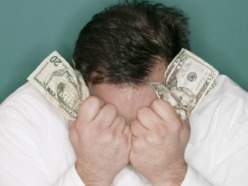
If unemployment soars and equity prices tumble, top U.S. banks should cope better than they would’ve before the financial crisis.
But that’s cold comfort considering the $462-billion loss they would face in such a severe scenario.
This heartening news comes courtesy the Federal Reserve, which today released the results of the Dodd-Frank stress tests on 18 banks.
Read: Pundits cynical about bank stress tests
The Fed tested what would happen if unemployment reached 12.1%, equity prices dropped more than 50%, housing prices fell more than 20%, and the largest trading firms experienced a sharp market shock.
The banks’ aggregate Tier 1 common capital ratio, which compares high-quality capital to risk-weighted assets, would fall from an actual 11.1% in Q3 2012 to 7.7% in Q4 2014 in the hypothetical stress scenario.
At least that’s better than the actual situation at the end of 2008, when the 18 firms together had a common ratio of 5.6%.
Read: Stress Testing Your Retirement Plan: “How Big is My Cushion?”
BNY Mellon and State Street would fare best, coming out with minimum stressed Tier 1 common ratios of 13.2% and 12.8%, respectively. Ally Bank would only have a ratio of capital to assets of 1.5%.
For a U.S. federal bank holding company to be considered well-capitalized, its Tier 1 ratio must be at least 6%, but Morgan Stanley, Goldman Sachs and Ally would fall under that threshold in the crisis.
The average common ratio of the 18 banks would be 7.4%.
Read: Preparing for the worst